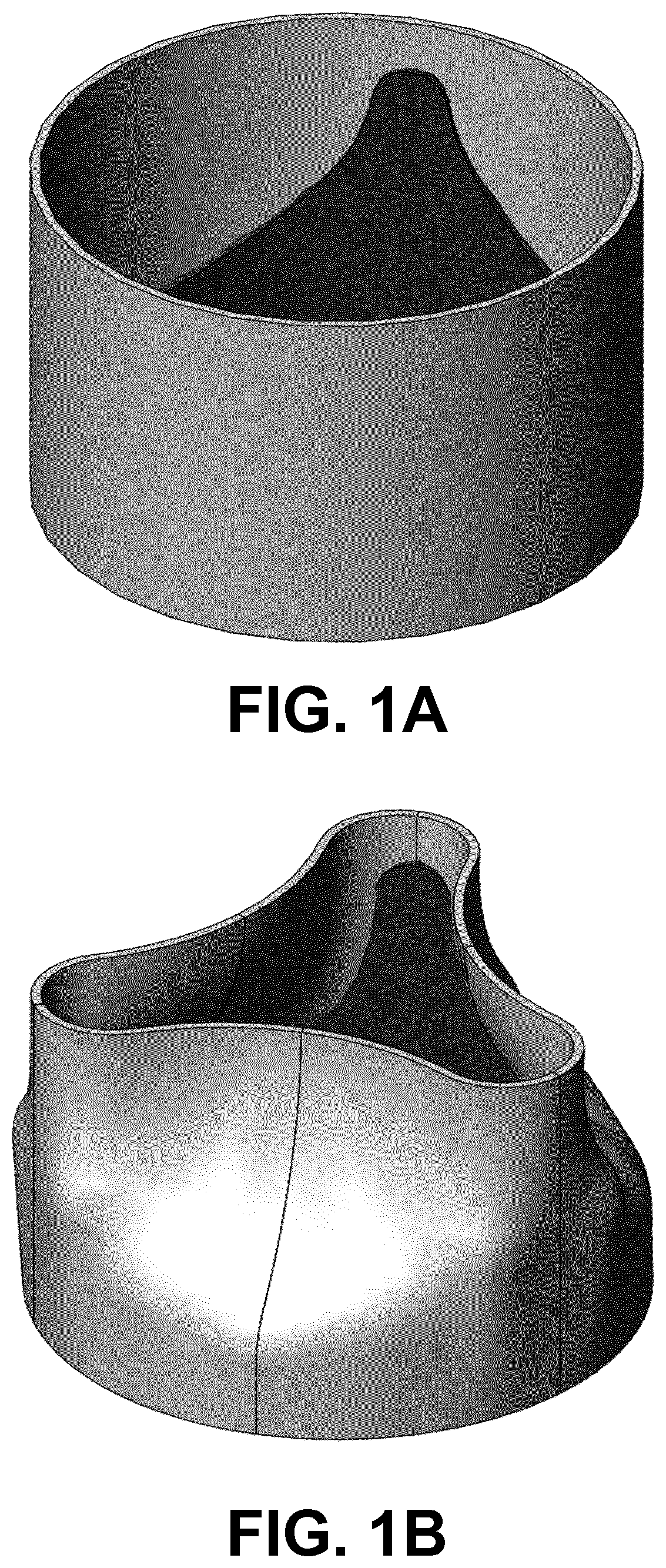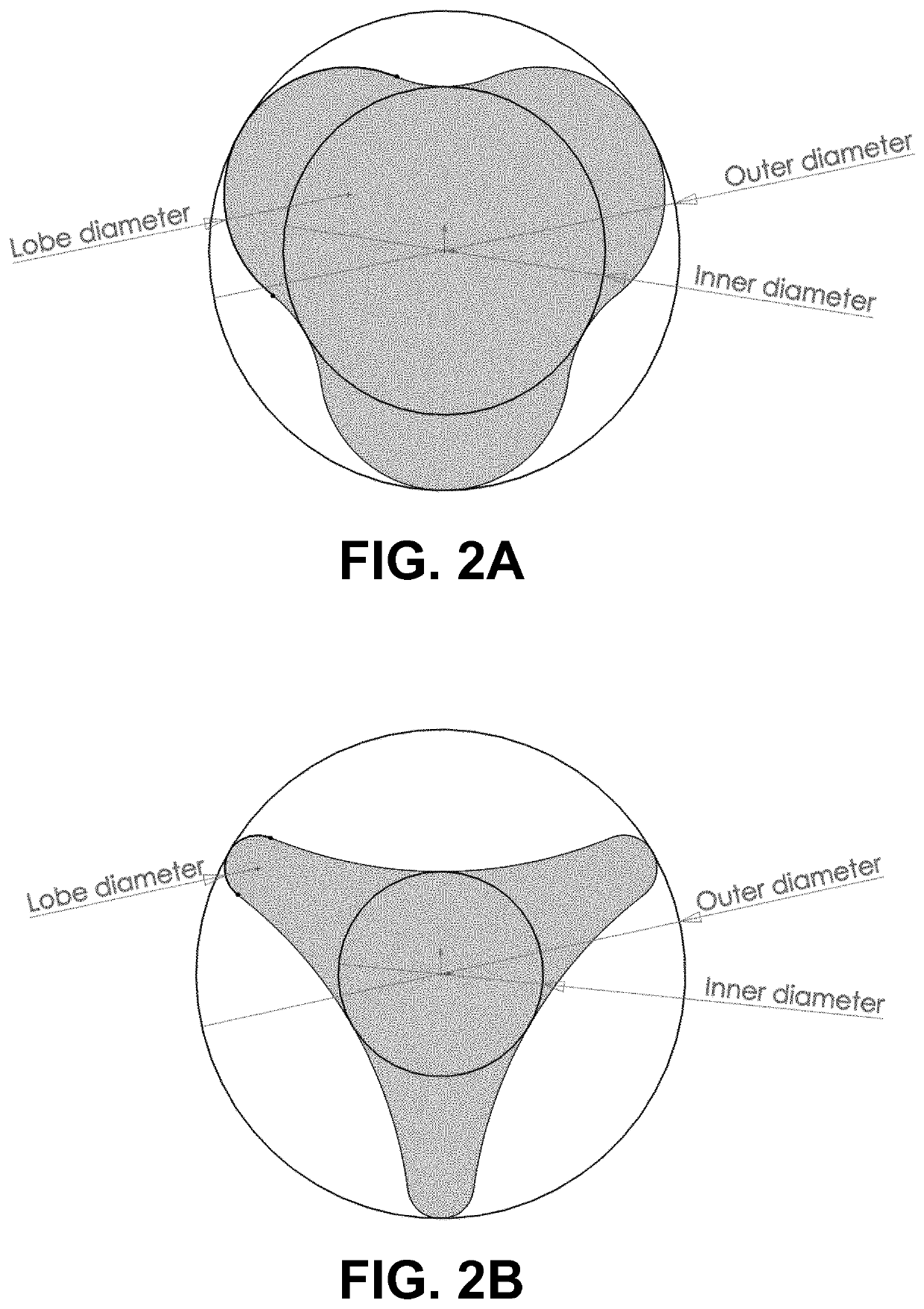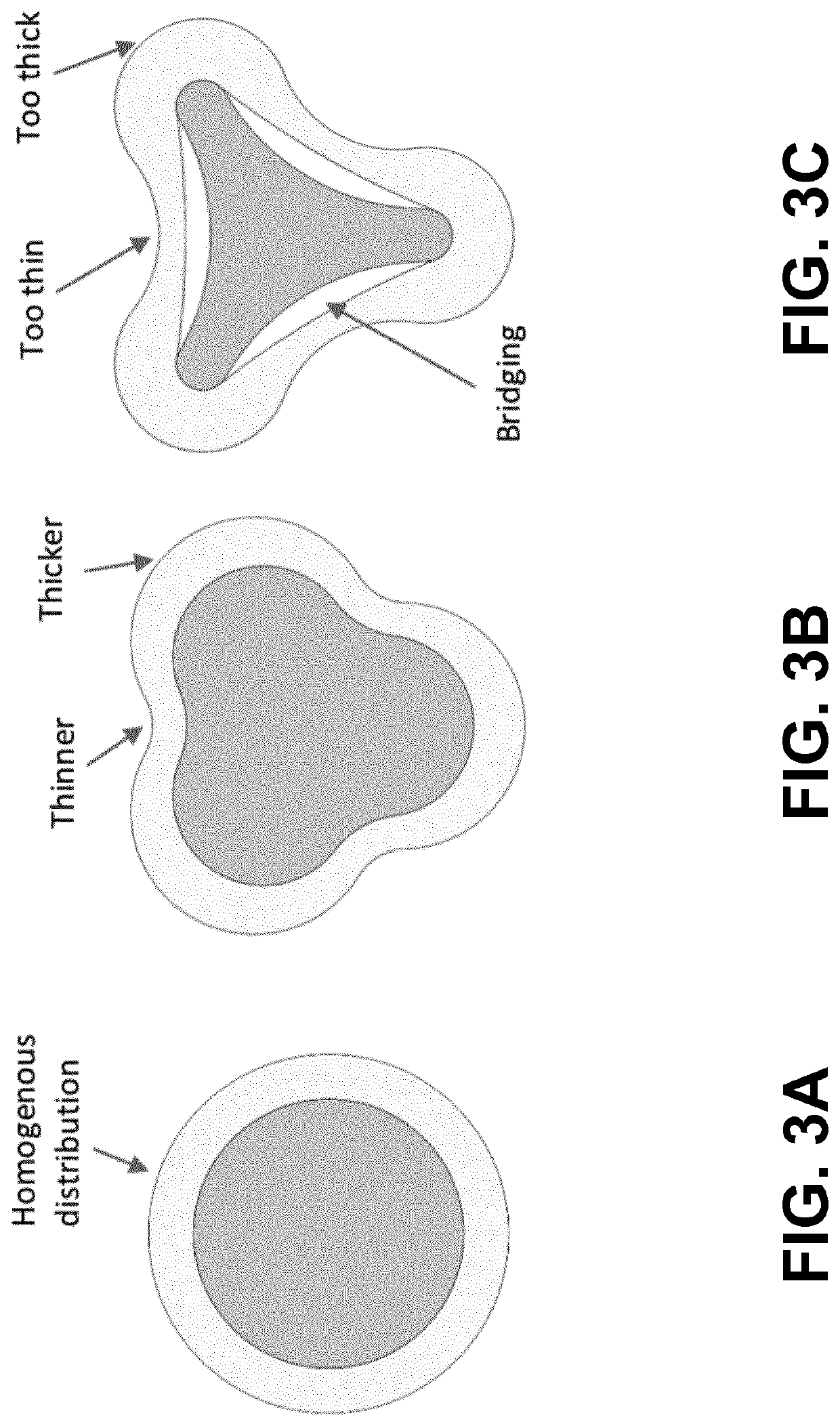Medical implant preform produced using an inside out flipping method
- Summary
- Abstract
- Description
- Claims
- Application Information
AI Technical Summary
Benefits of technology
Problems solved by technology
Method used
Image
Examples
example 1
State-of-Art
[0032]A preform with a geometry that distinguishes a number of concave surfaces is desired. In a state-of-art example the outer geometry of the mandrel (FIG. 6A) would match the desired inside geometry of the preform. A preform produced on this mandrel would exhibit a number of problems associated with electrospinning on complex geometries. Spinning on this mandrel would yield a preform similar to be one as shown in FIG. 6B (left). The preform would have a varying thickness distribution and show areas with bridging, where the preform will no longer be attached to the mandrel (FIG. 6B, right).
Flipping Inside Out
[0033]To produce the same desired preform using the method of this invention, a mandrel with the inverse geometry is used (FIG. 7A). The mandrel distinguishes essentially convex surfaces, resulting in significantly less problems during the electrospinning process; a complex shape with mainly convex shapes and only very limited concave areas. In this embodiment, the...
example 2
[0036]In the example of FIGS. 8A-B, the mandrel shown in FIG. 8A distinguishes a complex shape with mainly convex shapes and only very limited concave areas. In this example the mandrel and resulting preform are not uniformly formed along the whole length as shown, but shows a variation of the shape along its axis. FIG. 8B (left) is the preform that is formed using the mandrel (FIG. 8A). FIG. 8B (right) is the preform after the preform in FIG. 8B (left) is flipped inside-out. These tubular preforms could be advantageous in cases where the second end should stay open, e.g. for the production of transcatheter valves.
example 3
[0037]In the example of FIGS. 9A-B, the mandrel shown in FIG. 9A distinguishes a complex shape with mainly convex shapes and only very limited concave areas. In this example, the mandrel and the resulting preform distinguishes a complex shape with mainly convex shapes and only very local concave areas. In this example, the mandrel has local lobes attached to the cylindrical base. These lobed sections have mainly convex shapes and only very limited concave areas. FIG. 9B (left) is the preform that is formed using the mandrel (FIG. 9A). FIG. 9B (right) is the preform after the preform in FIG. 9B (left) is flipped inside-out. The resulting tubular preforms and the final preform (after flipping inside-out) could be advantageous in cases where a section of the preform has to conform to a specific shape, e.g. the indented section can be used to form the leaflets of a heart valve.
Additional Examples
[0038]The method of the invention is applicable for targets with two or more lobes. As shown...
PUM
| Property | Measurement | Unit |
|---|---|---|
| Area | aaaaa | aaaaa |
| Durability | aaaaa | aaaaa |
Abstract
Description
Claims
Application Information
 Login to View More
Login to View More - R&D
- Intellectual Property
- Life Sciences
- Materials
- Tech Scout
- Unparalleled Data Quality
- Higher Quality Content
- 60% Fewer Hallucinations
Browse by: Latest US Patents, China's latest patents, Technical Efficacy Thesaurus, Application Domain, Technology Topic, Popular Technical Reports.
© 2025 PatSnap. All rights reserved.Legal|Privacy policy|Modern Slavery Act Transparency Statement|Sitemap|About US| Contact US: help@patsnap.com



